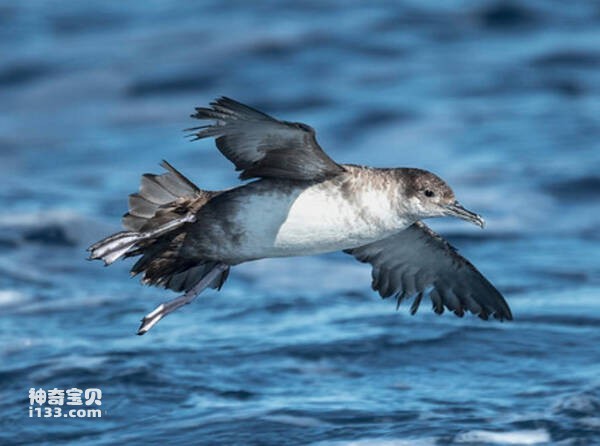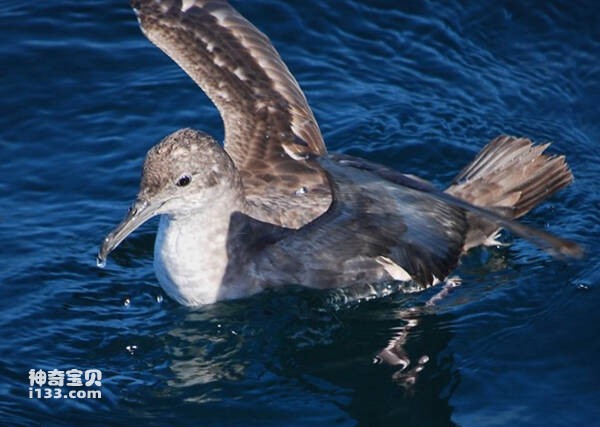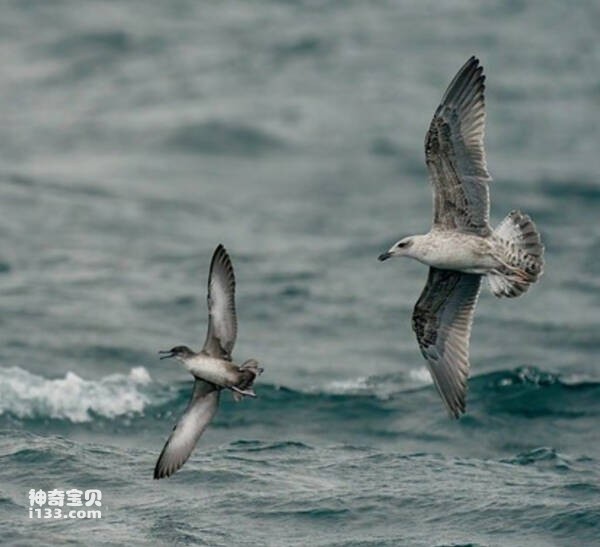Puffinus mauretanicus
IUCN
LCBasic Information
Scientific classification
- name:Puffinus mauretanicus
- Scientific Name:Puffinus mauretanicus,Balearic Shearwater ,Pardela balear
- Outline:Waterfowl
- Family:
Vital signs
- length:About 38 cm
- Weight:349-416g
- lifetime:No textual research information is available
Feature
Balearic shearwaters have a dark brown plumage on the upper body, and some lighter spots on the lower body, underside of the wings, and belly that tend to be white
Distribution and Habitat
Resident birds: France, Ireland, Italy, Portugal, Spain and the United Kingdom.
Breeding grounds: Algeria and Morocco.
Non-breeding place: Gibraltar.
Wandering: Belgium, Denmark, Germany, Israel, the Netherlands, Norway, Poland, Sweden and Tunisia.
Uncertain origin (seasonal uncertainty) : Albania, Bosnia and Herzegovina, Croatia, Faroe Islands, Greece, Libya, Malta, Monaco, Montenegro and Slovenia.
The Balearic Islands are located in the Balearic Sea in the Mediterranean Sea, off Valencia, on the Barcelona-Algiers axis from north to south. It consists of five main island groups: Menorca, Majorca, Cabrera, Ibiza and Formentera. Caves and crevices on these islands and coastal cliffs are home to and breeding Balearic shearwaters. The Balearic Shearwater is endemic to the Spanish islands of the same name. But Balearic shearwaters are not confined to this region. During the year, they wander and migrate first to many areas and can be observed elsewhere in Europe. They are fo
Appearance
Balearic shearwaters are 38 cm long, have a wingspan of 76-89 cm, and weigh 349-416 g. Like all seabirds in this family, this species has tubular nostrils at the top of its beak. There was no difference between the sexes. Their wings are long and thin compared to the rest of their bodies, allowing them to fly over the sea for long periods of time, although they also require significant help from wind and air movement to expend as little energy as possible during flight. The species can also propel itself through the water to catch prey.
Balearic shearwaters have a dark brown plumage on the upper body, and some lighter spots on the lower body, underside of the wings, and belly that tend to be white. The flight feathers, these large feathers that decorate the wings and the ends of the tail are darker, almost black. Not all individuals of the species are the same, and there are many differences in plumage. Some are darker than others, mostly brown in tone, while others are lighter in t
Details
The Balliari Shearwater (Puffinus mauretanicus) is known as Balearic Shearwater, Pardela balear, and has no subspecies.

As seabirds, Balearic shearwaters clearly forage at sea. They hunt prey mainly in pelagic waters, i.e. the high seas, in areas far from the coast, although its distribution is generally coastal. Pelagic fish (especially small pelagic fish) are the main food source for this species. It also feeds on plankton and makes extensive use of waste in the Mediterranean and Atlantic by diving into the water, up to 35 meters deep, or catching what fishermen throw back into the sea, sometimes also eating small plankton.
Balearic shearwaters have a fairly wide coastal distribution and tend to select productive shelf areas most often associated with Marine frontal systems. During breeding, birds tend to forage in the food-rich ocean areas closest to the breeding population. With the help of the best winds in a short window, some individuals will also travel to the feeding areas at the extremes of the distribution. These feeding waters are rich in small pelagic fish, with different types of fishing taking place at the same time, and can provide a large number of discard fish to the waters where the shearwaters are active. The species is generally closer to shore during the non-breeding season, forming large clusters whose location varies between (and within) years, probably due to fluctuations in the availability of small pelagic fish populations.

The Balearic shearwater's diet varies according to the season, needs, and sex. For example, when they need energy to raise their young, they prefer sardines and anchovies, which are very abundant fish.
Activity east of the Mediterranean coast is rarer, as the species usually breeds only in a few Balearic islands. France is a particularly important source for Balearic shearwaters, flying there during the non-breeding season from June to September, when they fly over French Atlantic waters and the English Channel, and, to a lesser extent, during the breeding season from late February to early July - in the Mediterranean Sea. The main breeding grounds of the Balearic petrel in France are the Bay of Mont Saint-Michel, the Bay of Saint-Brieux, the Bay of Ranon, the mouth of the Vilaine-le Mor Braz, the Corniche vendeenne Saint-Ilaire and the southern Landes Plateau, in the Landes and Pyrenees - the Atlantic Ocean. Breeding colonies are relatively small, ranging from isolated nests to loose congregations of 10 or even 100 breeding pairs. Adult birds do not begin breeding until the third year at the earliest, although most breeding tends to occur between the ages of 4 and 6. Birds lay eggs in mid-March (especially late February); Incubation occurred from late April to early May. Around late June, a few days before fledging (early July), the adult birds leave the breeding flock.

As of 2011, the breeding population size of Balearic shearwaters is estimated to be between 2,000 and 4,500 pairs. In 2012, the official figure was 3,142 pairs. This includes: 900 pairs on Mallorca, 405 pairs on Menorca, 475 pairs on Cabrera, 650 pairs on Ibiza and 712 pairs on Formentera. Offshore studies using two methods (ship-based surveys and coastal counts of migration bottlenecks in the Strait of Gibraltar) suggest that the total global population of Balearic petrels is around 25,000, suggesting that breeding numbers may be higher than previously assumed (Arroyo et al. 2014). From these global data, we assume that the species population structure is in equilibrium. In 2016, the inferred breeding population size was about 7,200 pairs, although this optimistic figure should also be treated with caution.
In fact, very few Balearic shearwaters survive to sexual maturity and reproduce. The main reason for this was that natural predators damaged genetta tigrina. Mammals such as black and brown rats, wildcats and Tigrina tigrina ate Balearic shearwater eggs and juvenile shearwaters, and sometimes even became shearwaters. This hindered the natural growth of the population. To combat these hunters, rodent control campaigns have been going on for about two decades (as of 2018) on the various islands where the species breeds. The pressure is certainly reduced, but the threat is still there.
Another reason for the poor survival rate of adult shearwaters is hunting. Unfortunately, subadult birds and adult shearwaters are often caught accidentally by fishing gear, which they sometimes approach to feed on the discarded material. Based on the work of biologist Meritxell Genovart in 2016, BirdLife said these catches are the main cause of Balearic shearwaters deaths, with 50% of deaths attributable to this factor.
Like all seabirds, climate change is affecting this species. The latter did affect the distribution of populations farther and farther north, as well as the abundance of prey. Moreover, since Balearic shearwaters live in relatively close groups, the slightest disturbance to their habitat can have a serious impact on the entire species. For example, oil slicks, light pollution that can disorient birds and their young shearwaters, nautical activities or the construction of wind farms (collisions, avoiding the area, scarcity of prey, construction site disturbances) can seriously disturb the entire individual and affect the future of the species.
Listed on the IUCN Red List of Threatened Species (IUCN)2018 ver3.1 - Critically Endangered (CR).
Protect wild animals and eliminate wild meat.
Maintaining ecological balance is everyone's responsibility!








